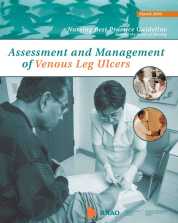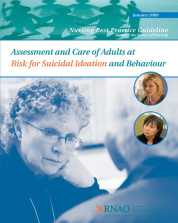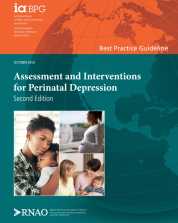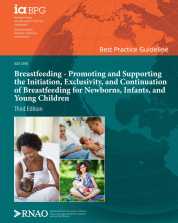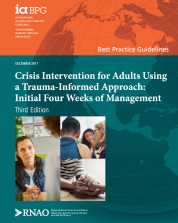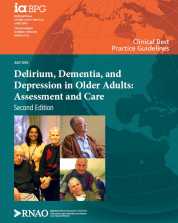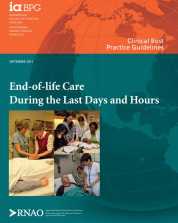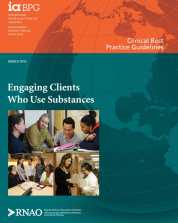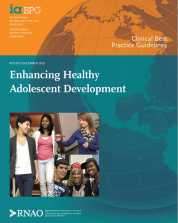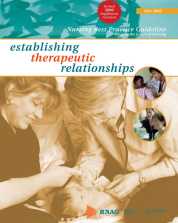The purpose of this best practice guideline (BPG) is to:
• improve outcomes for venous leg ulcer clients,
• assist practitioners to apply the best available research evidence to clinical decisions, and
• promote the responsible use of healthcare resources.
The purpose of this best practice guideline (BPG) is to provide nurses with recommendations, based on the best available evidence, related to the assessment and management of adults at risk for suicidal ideation and behaviour.
The purpose of this best practice guideline (BPG) is to present evidence-based recommendations for nurses and the interprofessional team across all care settings to enhance the quality of their practices to support the reduced incidence of perinatal depression through the implementation of five components of care: routine screening, assessment, prevention, coordinated interventions, and evaluation.
The purpose of this best practice guideline (BPG) is to enhance the capacity of nurses, the interprofessional team, peers, policy-makers, and employers to meet the needs of breastfeeding persons, their healthy term newborns, infants, and young children, and their partners, family, and support network.
The purpose of this best practice guideline is to focus on how nurses and the interprofessional team can provide effective trauma-informed crisis interventions (immediately and to up to four weeks post-crisis) in adults (18 years and older) in order to optimize evidence-based practices and clinical outcomes. The guideline is applicable in all practice settings and promotes consistent, evidence-based response and care.
This best practice guidelines (BPG) outlines recommendations for the assessment and care of delirium, dementia and depression in older adults. The focus is on the provision of effective, compassionate and dignified care, and on managing any presenting signs, symptoms or behaviours.
The purpose of this best practice guideline (BPG) is to provide evidence-based recommendations for registered nurses and registered practical nurses on best nursing practices for end-of-life care during the last days and hours of life.
The purpose of this best practice guideline is to provide nurses and the interprofessional team across all care settings with evidence-based recommendations related to assessment and interventions for individuals aged 11 years and older who use substances and may be at risk for or experiencing a substance use disorder.
The purpose of this best practice guideline (BPG) is to assist nurses working with youth in a variety of practice settings, i.e. schools, public health units, community health centres, adolescent clinics, hospitals, and in family practice. Recommendations are inclusive of adolescent development across diverse contexts (e.g. cultural, socioeconomic, structural, political.)
The purpose of this best practice guideline (BPG) is to address the therapeutic relationship and its central importance to nursing practice. Effective nursing practice is dependent on an effective therapeutic relationship between the nurse and the client. The guideline addresses the qualities and capacities of an effective therapeutic relationship, the state of knowledge, and the knowledge needed to be effective in a therapeutic relationship.
